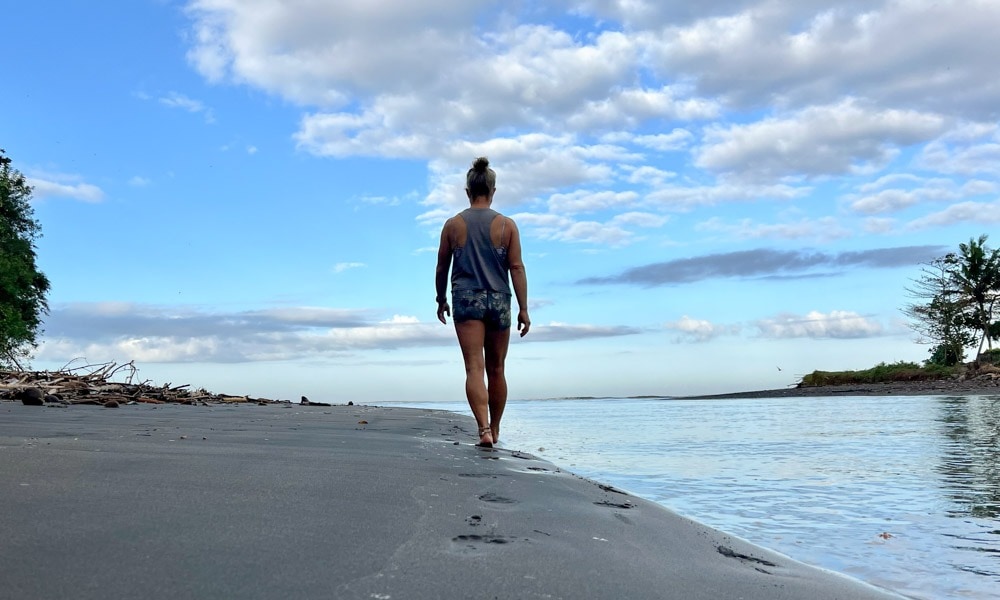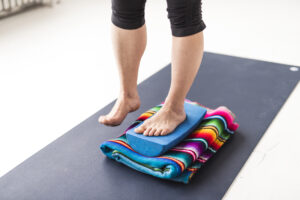Let’s talk about walking.
Most of the time when modern humans walk, we’re actually doing a whole bunch of really small falls.
Looks like walking, feels like walking, but the resulting impacts on your body are really, really different – and not very awesome.
With real walking, your joints get suppler, your bones get stronger, and way more of your muscles get used – helloooooo, higher metabolism.
With the way we walk (aka fall), we friction the cartilage off our joints, our bones lose their density, and our muscles gradually get weaker and weaker.
What’s The Difference Between Falling And Walking?
When I say ‘falling’ here I mean a motion that’s basically uncontrolled by your muscles. Gravity pulls your body forward and then you catch yourself with your front leg. When you do this a lot, it creates a series of mini-falls that create mini-traumas over time.
In contrast, what I mean by ‘walking’ is a motion where your muscles are in charge the whole time. They lift your body and then propel it forward.
If Falling’s So Bad, Why Do We Do It?
In some ways, falling is actually not a bad thing – it helps most us get around the planet pretty well for a long time.
Basically, I think of falling as a coping strategy your body has developed in response to spending a lifetime sitting, wearing shoes, moving on artificial surfaces, and not moving enough.
Our bodies have adapted to our non-moving environment by shortening some muscles and lengthening others – which ends up meaning that the muscles we need for true walking can’t actually do their jobs.
Like any coping strategy (I’m looking at you, delicious bottle of wine), we can do better.
Build strong, healthy, pain-free feet - for a lifetime! (for free!)
Most Of Us Use Our Hip Flexors As Our Primary Walking/Falling Muscles
Try this:
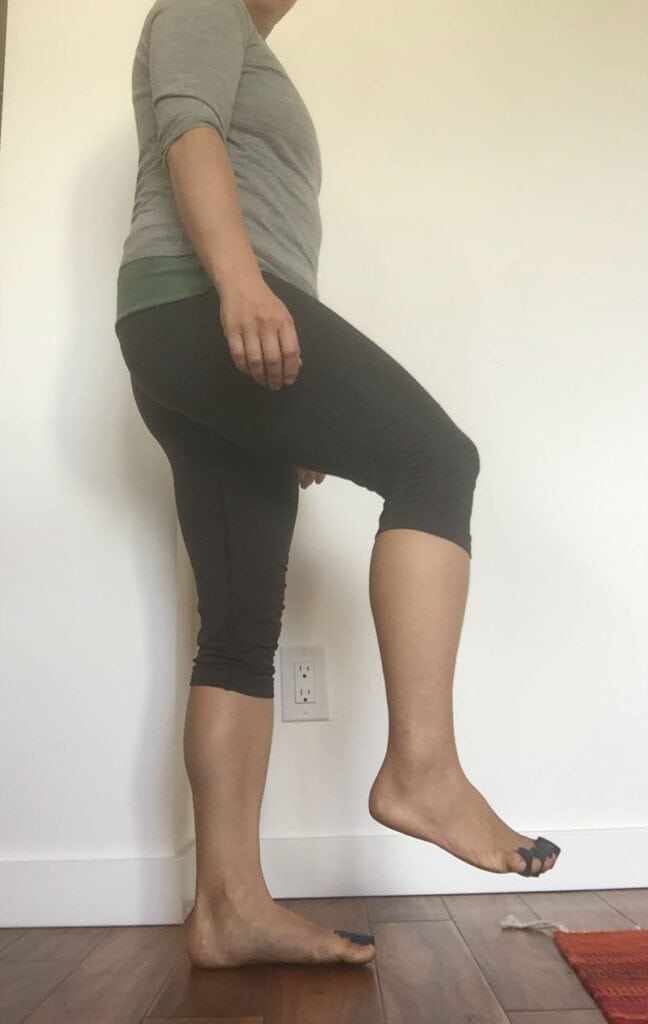
Imagine that you want to start walking. You stand up. You lift up your front leg with your hip flexors and a bent knee. Now, what do you have to do to get your foot down in front of you?
Straightening your hip doesn’t work – now you’re just back where you started.
Straightening your knee doesn’t work – now you just have a straight leg sticking out.
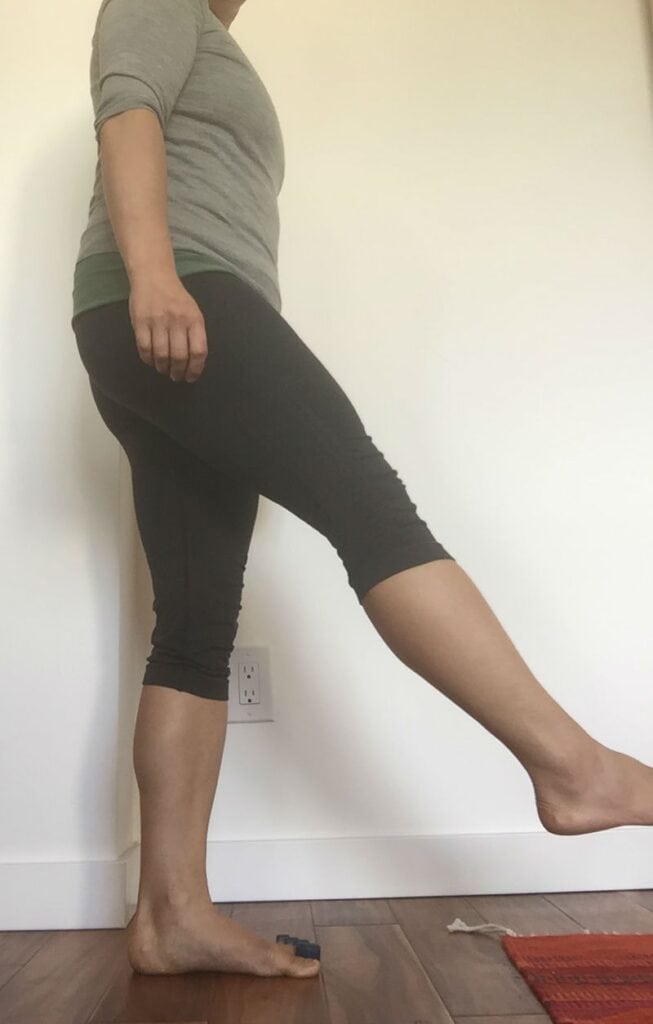
Instead, what you’re going to have to do is lean forward, and then catch yourself on your bent front leg. Also known as falling.
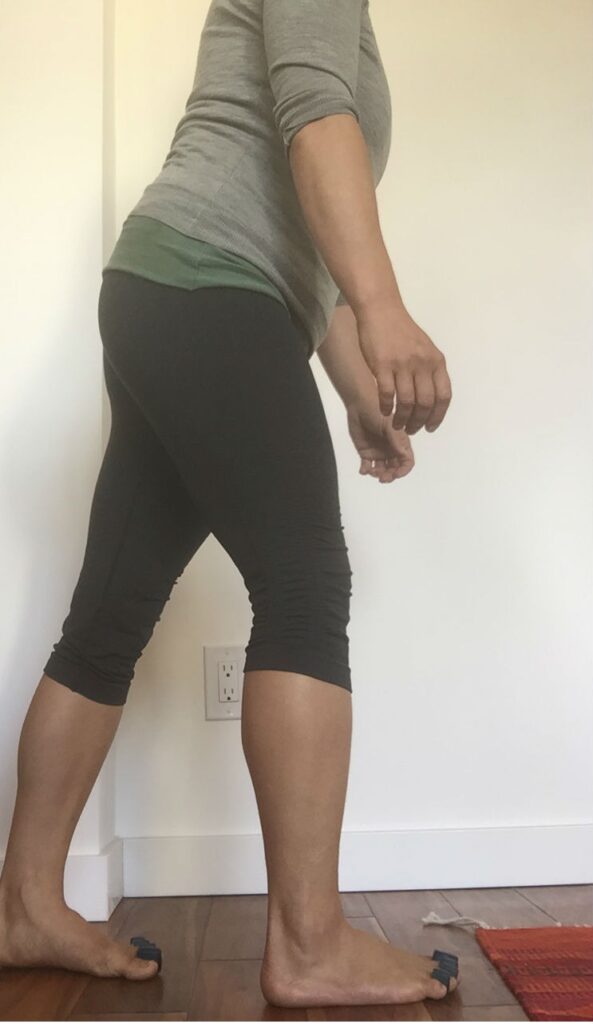
The front side of your body just isn’t able to move you forward without getting a gravity assist.
The Key To Walking Is Your Backside
If you want to actually walk, you’re going to have to lift yourself up with your hip muscles, then use your standing leg to push yourself forward. It’s a lot like paddling a canoe – pushing the paddle back creates the force that pushes the boat forward. This is called posterior push-off, and when you do it right, you will be using your glutes and hamstrings to move.
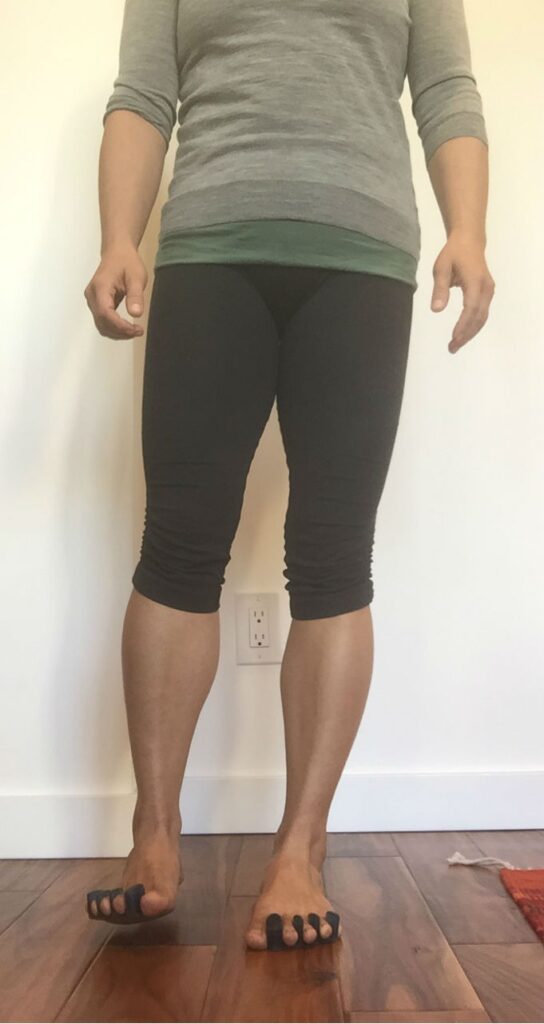
But…there’s always a but….
Your modern human body probably doesn’t have all the bits it needs to create a posterior push-off. That’s why it uses the falling/hip flexor technique instead.
Want to walk better? Here’s what you need.
To create better walking – aka posterior push-off – you need:
The ability to dorsiflex your ankles (e.g. close the angle between your feet and your shins).
This is part of what allows your leg to travel behind you – and in order to dorsiflex, you need the right amount of calf muscle length. If you’ve been wearing shoes and sitting in chairs, your calves are probably not long enough.
Try doing this calf stretch a lot and walking on hills as much as possible!
The ability to extend your hips (e.g. reach your femur back behind your pelvis).
This is the other part of what allows your leg to travel behind you. I would show you a picture of this, but frankly, I can only barely do it – my hip flexors don’t have a lot of range. Most of us fake hip extension by using our lower backs and – you guessed it – create lots of back and hip issues along the way. You need sufficient length in your quads, your iliacus and your psoas muscles to create hip extension.
Try doing this psoas release to start creating some length through the fronts of your hips.
Enough strength in your lateral hip muscles to stand on one leg while keeping the other leg straight.
This is what we like to call ‘pelvic listing’ and it should happen every time you take a step.
Check out this video to start pelvic listing.
How To Put It All Together
The nice part about walking is that it’s reflexive. That means that your body actually knows how to do it for you. The reason we’re messed up isn’t really because we didn’t learn it right, it’s because our bodies are too weak and not the right shape.
When you start working on creating these abilities, your body will just naturally start to improve its walking to falling ratio. Just by doing these simple exercises (ideally right before you go for a walk) you’ll instantly start to enjoy more of the benefits of walking and less of the damage of falling. And then the more you walk, the better things get. So get off this computer and go for a walk now, ya hear!?

